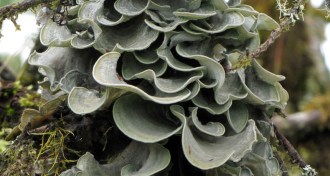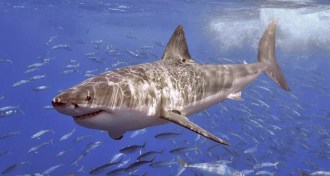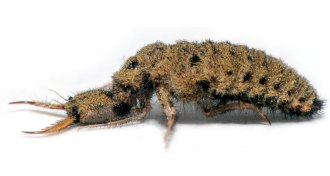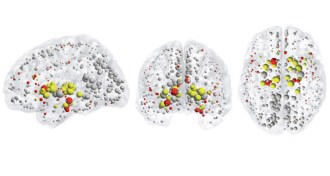Life
Sign up for our newsletter
We summarize the week's scientific breakthroughs every Thursday.
-
 Neuroscience
NeuroscienceShaking up the body may improve attention
Just two minutes of whole body vibrations improved young adults’ attention to detail.
-
 Life
LifeOne lichen is actually 126 species and counting
One supposedly well-known tropical lichen could really be several hundred kinds.
By Susan Milius -
 Neuroscience
NeuroscienceAlzheimer’s disease may come in distinct forms
Mouse experiments, if confirmed in people, imply that Alzheimer’s disease treatment should be personalized.
-
 Animals
AnimalsWhy great white shark sightings are good news
Conservation measures implemented in the 1990s halted a decline in great white sharks in the Atlantic.
-
 Life
LifeAnimal sex lives exposed in ‘Nature’s Nether Regions’
What the sex lives of bugs, birds, and beasts tell us about evolution, biodiversity, and ourselves.
By Susan Milius -
 Animals
AnimalsTo ID birds, try facial recognition
Improve your backyard birding using facial recognition software.
-

-

-
 Animals
AnimalsAnt lions hunt despite sealed lips
Ant lions are ferocious predators, but some of them don’t have a mouth. At least not in the usual sense.
By Susan Milius -
 Animals
AnimalsMysterious neurotoxin may help flatworms kill prey
Tetrodotoxin, the deadly chemical in pufferfish, could help flatworms transform their earthworm prey into puddles of goo.
By Beth Mole -
 Neuroscience
NeuroscienceBusy brain hubs go awry in disorders, study suggests
Schizophrenia, Alzheimer’s and other brain disorders may occur when the brain’s most active hubs are damaged.
-
 Life
LifeHIV hides in growth-promoting genes
The discovery that HIV can trigger infected cells to divide means scientists may need to rethink strategies for treating the virus that causes AIDS.